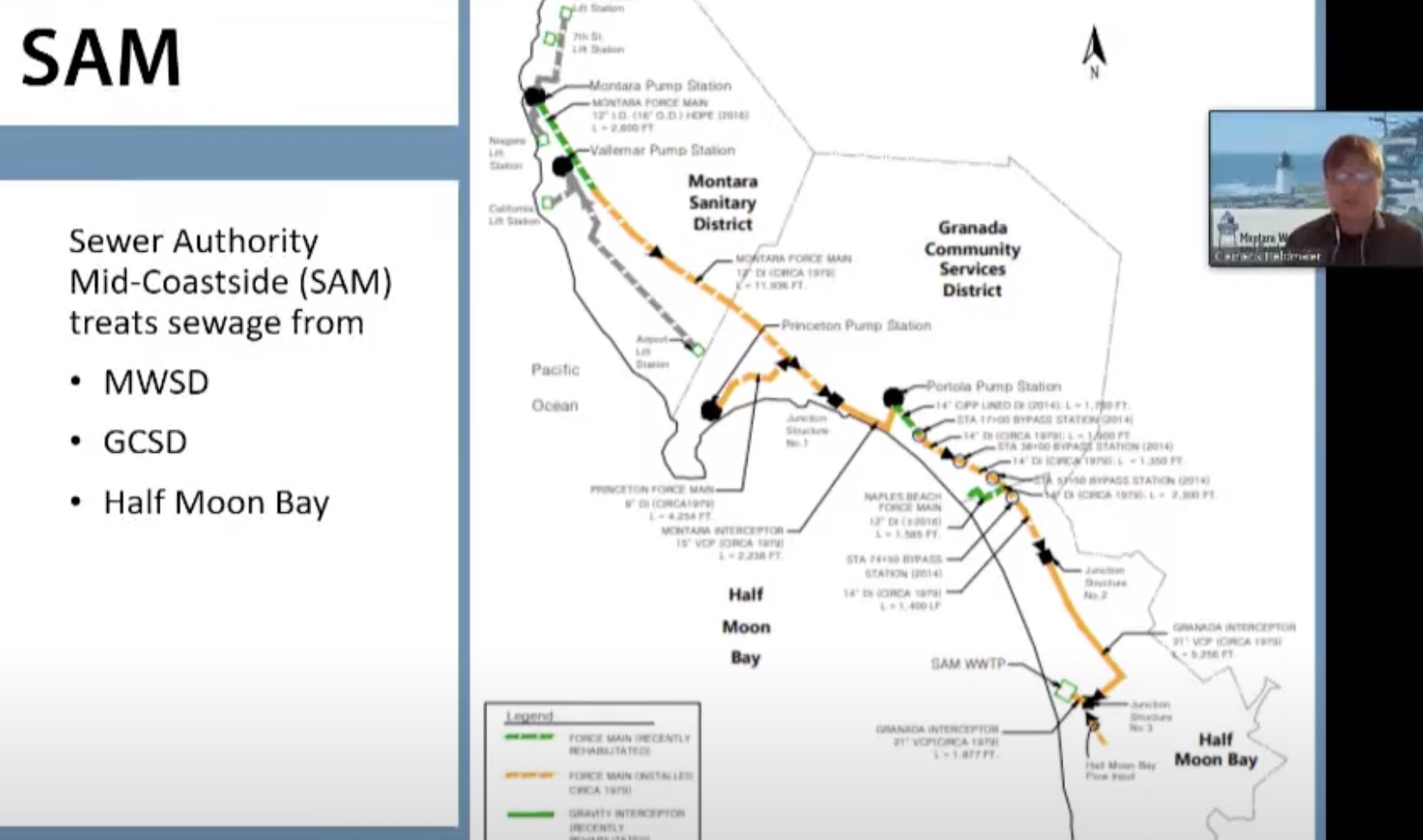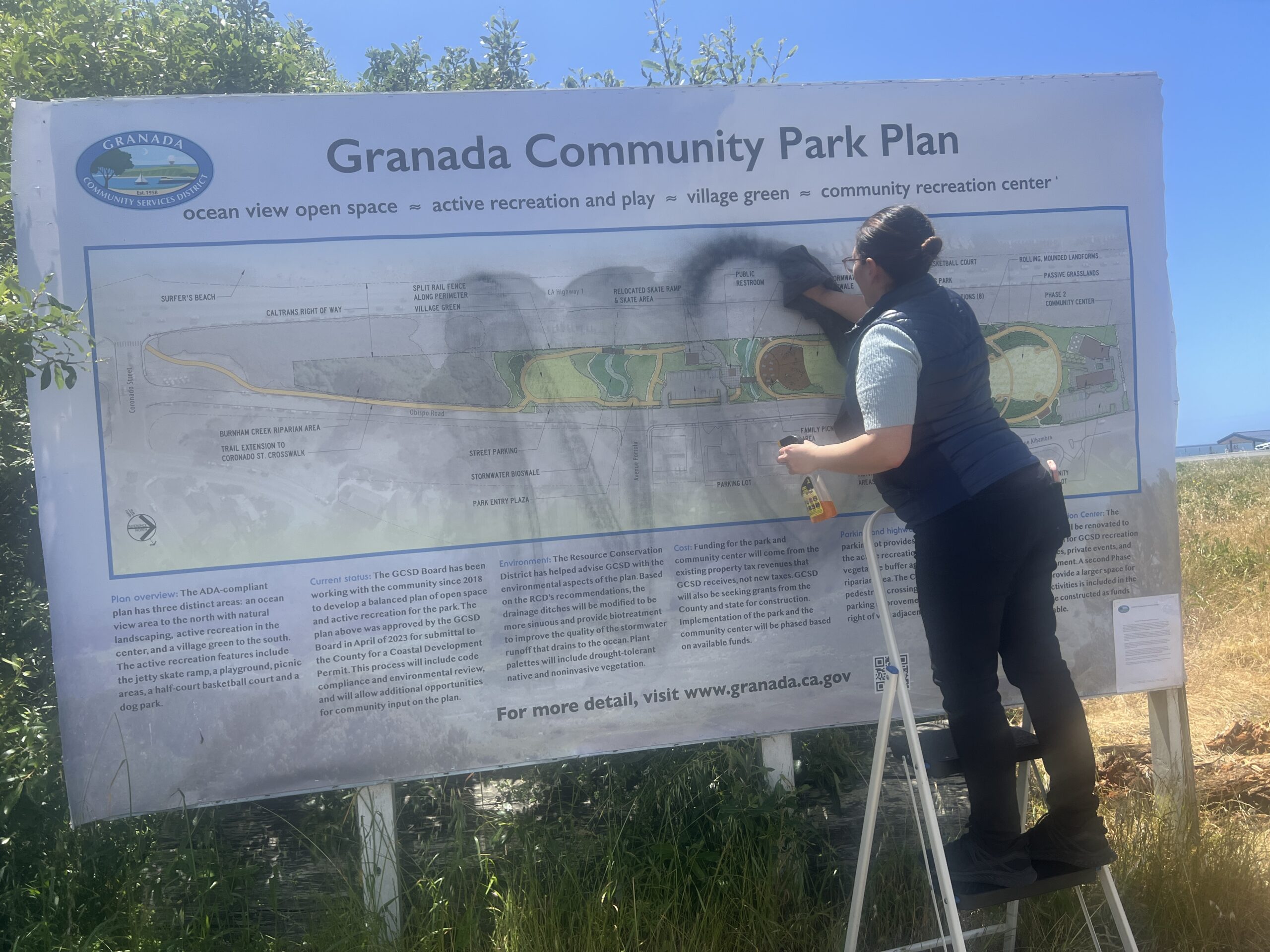|
Getting your Trinity Audio player ready...
|
Bottom Line:
There are 10 reasons (aka: Problems) why the Mid-Pen Cypress Point affordable housing project and the requested LCP amendment make no sense compared to alternatives, and/or, does harm to existing residents.
Other Bottom Line:
There are 2 strong reasons why that project will get railroaded through:
-
Money.
MidPen is a $2+ billion “non-profit”. Their board is packed with real estate, venture, and financial services firms for whom MidPen is a conduit of new business. The County has given $5.5 million in funding to MidPen to get the project started. The tax breaks wealthy investors get from affordable housing have been driving this process for over 50 years – doubling the returns for wealthy investors who can use the tax write-off. And those types of firms have lobbying organizations in the County.
-
20th century thinking about a 21st century problem – persists.
Growth used to be considered good, but now we realize it doesn’t pay for itself. Rather than wrestle with issues like population growth, education, sustainability, or businesses which don’t pay workers a living wage, policy makers appear to favor helping monied interests make more money by building more housing. It’s easy and familiar.
The Problems with MidPen Cypress Point:
1. The LCP review process seems irregular, but is it corrupt?
It would be easy to have misgivings about the fairness of the County review process given the Resist Density lawyer’s letter, Commissioner Ketcham’s questions at the meeting, and other items below. It certainly doesn’t look proper, but stay tuned for more news.
- Citizens were given one (1) day to review the entire document; it was posted 6 days before the Planning Commission Meeting, but written comments had to be submitted five (5) days in advance. The intent seems to be to suppress public review and comment.
- The County is not following its own zoning regulations in review of the proposed project (click here to refer to the letter from a Lawyer submitted at the hearing).
- Traffic analysis and mitigation of severe adverse events is proposed for AFTER approval. This has to be done BEFORE the project can be approved, and the future costs funded IN PERPETUITY and disclosed so residents can assess them.
- Someone withheld the project hydromodification report from the Staff Report to the Planning Commission.
- In spite of a promised early review, the Planning Department bypassed MCC review and comment, instead taking the project to the Planning Commission first.
- The Environmental Impact Report appears to be being bypassed. More on that below.
- County employee internal emails stated that with this amendment, Coastal Commission review would be largely bypassed.
- I’m told you don’t need an LCP amendment to REDUCE the units authorized. Something else is going on; there’s an underlying reason for this amendment and the unusual process.
2. The Environmental Impact Report is incomplete, and overlooks real problems.
- The Cypress Point site was a secret WWII drone installation (yes, we had Drones in WWII!!). There are a number of military chemicals and metals waiting to be discovered on that site.
- One of them, evident to local residents, is Asbestos. There is written evidence unmitigated asbestos exists on the site.
- The search terms used by the consultant in researching the site: 1) lacked a valid property address, and 2) misspelled the town “Moss Beacch, CA, 94038”. No wonder they didn’t find problems. Was that intentional?
3. The buildings are out of character with the community.
- The 37’ height is too great, and the developer isn’t even agreeing to a standard definition of how to measure height.
- The setbacks are below minimum in some places.
- The site includes 4 unit quadruplexes.
4. Traffic will be Severely Congested and the Costs of Fixing it are Not Fully Paid by the Developers.
- The new traffic study includes millions in costs and a series of roundabouts, but those factors were not presented at the Planning Commission hearing, again, because the Cypress Point Project review is out of proper sequence.
5. Disaster Evacuation Risks will Increase.
- We are in the highest wildfire risk zone in the County, in a Tsunami Zone, in an Earthquake zone, and we have the 14th worst disaster evacuation in the state. Adding hundreds of people and cars will make things worse. In a bit of macabre humor, one pro-development commenter at the hearing said “the extra people won’t make a difference”, presumably meaning “a lot of you are going to die anyway, but let’s give these people homes.” Details of the risks can be found in the Resist Density Disaster Preparedness Report.
- Paradise had many more, and wider, roads for evacuation than we do: we have one (1) 2-lane road in and out. And we can probably count on them shutting the tunnel down when we need it.
6. Fire Risks and Costs will Increase.
- Residents are already seeing massive fire insurance rate increases, or losing their policies. This development will make things worse by literally adding fuel to the fire.
- The current fire code requires water storage for only one two-hour fire at a time, based on a spread of single family homes. However this project will put duplexes and quadruplexes in close proximity. Will that require a higher standard of fire water storage? And who will pay for that? Are the building materials to be fire safe? Note that Big Wave initially had fire-safe materials required, but the requirements were lifted.
- Also recall that in Paradise, “the homes were the fuel” as the blaze raced 100 yards per second. Density hurts when it comes to fire safety.
7. Water Supply and Sewer Risks, and Costs, will Increase.
- During the most recent drought, water pumped from the MWSD mountain aquifer was deemed “ancient”, “thousands of years old”, by the hydrologist. This compares to an average water age of 24 years in normal years. The implication is we’re reaching rock bottom for that source.
- Yet, when MWSD has tried to expand access in the water shed, it was blocked by the County Planning Department.
- There has been no assessment of the stresses new residences will put upon an already-overburdened sewer system, nor any projection of the costs the new developments will contribute. Unless care is taken, existing residents will end up funding infrastructure solely benefiting newcomers.
- The County Office of Sustainability has designated the SAM sewer plant as “highly vulnerable” to climate change. Yet this proposal, and Big Wave, would lead to investing more dollars to connect to a failing facility that ought to be moved. Shouldn’t we solve that problem first, rather than wasting money and risking further sewage spills?
- Water departments are supposed to “reserve” water for affordable housing, but how can this be done in the face of a climate crisis which was unknown when the LCP was created? How is this water to be held during drought years? Who compensates water districts for the opportunity costs of not being able to sell this water?
8. There are Better Sites Available.
- At the LCP hearing, multiple residents commented that El Granada and Half Moon Bay had sites closer to better transportation, food, health care, and other services.
- Residents in Cypress Point will be 6 miles in either direction from healthcare, groceries, and other services. Yet this is somehow supposed to REDUCE vehicle miles traveled, and pollution?
- There is no hospital in the mid-Coast. The Seaton nursing home, which had provided emergency services, has an uncertain future.
9. Risk of Increased Crime.
- One resident commented that another MidPen development had caused a dramatic spike in crime. She raised the issue of the cost of additional police protection. This is surprising because that development was owner-occupied housing, which normally engenders more responsible behavior than rental housing.
- Other residents raised the issue of background checks for prospective residents. Given the prior point, it opens to question the governance MidPen is providing.
- What funding is planned, and what is the source, for increased police and fire coverage?
10. Traffic will be a dangerous, congested mess.
- Even MidPen, which vastly understated the daily car trips from the facility, had to admit there were severe unmitigated traffic problems that will result. To any resident who has driven these streets, that is beyond obvious.
- Can you envision school kids walking to Farallone View school along route 1? The bus routes won’t take them to school – they’ll be dropped off several blocks away.
- The multiple roundabouts proposed in the traffic plan will slow and frustrate everyone. There is room for debate about roundabouts, which we’ll cover in a separate article, but in my personal experience, they can be deadly.
11. So What? … What to do:
- Table the Cypress Point housing project until all questions are documented, answered, and accountability is defined for each issue as follows:
- Outcomes of all types: traffic, costs, resident composition, fire and water services, etc.
- A mechanism for independently, periodically Auditing those outcomes,
- Funding for all changes, and for the ongoing auditing, remediation and restitution which may be required,
- And binding processes for Remediation and Resident restitution are created in the event planned outcomes are not achieved.
- Table the LCP amendment – you don’t need an amendment to REDUCE the units.
- Reassess actual LCP-area growth and stresses. There may have been plenty of water and sewer for the growth EXPECTED since 1980, but how have ACTUAL rental and 2nd units and other projects affected water supplies? Is the planned build-out from the initial LCP ecologically feasible, and at what costs? There WAS a 2013 update to the LCP looking at these issues, but the data used therein comes variously from: 2000, 2001, 2002, and 2006. Things have changed. Sewers have leaked. Droughts have worsened.
- Consider the Cumulative Impacts of all pending population expansions before ruling on any single project. Revise the LCP to match the infrastructure capacities and risk profiles of the region.
- Define sustainable population capacity based on drought year water supplies. Do not base population decisions on ‘average’ or ‘wet’ years.
- Ensure the required fire, water, sewer and traffic infrastructure will exist in advance of or coincident with the added population, and will be paid for IN PERPETUITY by the newcomers, so that existing residents aren’t further disadvantaged financially beyond the degradations and risks to their quality of life, health, and safety.
- Revisit the priority and utility of affordable housing as a solution to a population and business growth problem. Why isn’t growth paying for itself?
- Revisit the concept of “reserving” water and sewer capacity for affordable housing, especially in the coastal LCP.
- If the project is to be approved, give first preference to community essential workers, including: police, fire, emergency medical techs, teachers, and public works employees. Require all residents to work Coastside.
- Provide a comprehensive impact assessment, including a comprehensive Fiscal Sustainability Assessment for all aspects of the proposed project. Currently, there is no comprehensive presentation of the county-wide funding burden and costs included with this proposal. Separately, we know:
- there are tens of millions considered for road changes related to this project,
- the County has loaned the Cypress Point backers millions of dollars to get the project started,
- the County has spent countless staff hours, and,
- investors will make millions on the project and related tax credits.
- In addition, someone is going to have to pay for large investments required in water and sewer infrastructure.
But nowhere are all those costs tallied up in a Fiscal Sustainability Assessment so County taxpayers can ensure they are not subsidizing the profits and benefits to be received by others.
If you’re going to add population onto an eroding coast, in an earthquake zone, in a tsumani zone, in the highest wildfire risk in the county, in the middle of a Climate Crisis, at LEAST you should integrate all these considerations into a comprehensive impact assessment. Perhaps the lack of Fiscal Sustainability Assessments should not be surprising in a County with ~$4 billion unfunded pension liability, but it’s time to stop unsustainable 20th century thinking, whether environmental or fiscal. It’s time to move beyond late 20th Century thinking that “a little growth is OK”, and amend the LCP to include an integrated 21st Century sustainability analysis, with defined accountability for outcomes, rather than dropping the problems into the lives of Coastside residents and letting them deal with the consequences.
No EIR? Resist Density’s Attorney’s Letter to SMCo Planning re MidPen
- LETTER. Dated 1/22/2020. Resist Density attorney, Brian Gaffney writes to San Mateo County Planning to encourage them to follow their own rules.
Some Copy and Pasted Tidbits from the Letter.
Worth a full read.
“The County Has Failed to Follow Its Own Zoning Regulations in Review of the Proposed Project.
The Staff Report and its Attachments Do Not Contain Adequate Environmental Review.
- There is No Analysis of Emergency Evacuation and Public Safety Impacts.
- There is No Analysis of Storm Water Runoff Impacts to Montara Creek and the Fitzgerald Area of Specific Biological Significance.
- Failure to Address Traffic Concerns Raised by Caltrans. Rather than undertake traffic calming measures or pedestrian crossings with beacons, MidPen now only suggests the cheaper (and likely less-effective) distribution of literature to discourage residents from crossing the highway to access the Pacific Ocean, the lighthouse, and southbound bus lines.
- Also, MidPen has not proposed to pay for the traffic signals and roundabouts being considered.
There Has Been an Inadequate Analysis of Project Impacts from Hazardous Materials.
CLICK for photo: (It used to be a top secret military base in WWII)!!!
The Proposed Project is Inconsistent with the Coastal Act and the San Mateo County LCP
The Coastal Act requires that new residential development must “be located within, contiguous with, or in close proximity to, existing developed areas able to accommodate it”, and “where it will not have significant adverse effects, either individually or cumulatively on coastal resources.” Coastal Act section 30250. It is clear that the traffic, public access, emergency evacuation, hazardous material, and discharge impacts of the proposed project are likely to have significant adverse impacts, and that after years of preparation neither MidPen nor the County are willing to engage in necessary analysis of impacts and mitigations for the project. Numerous traffic impacts are undoubtedly unavoidable. Thus, the project violates the Coastal Act. ”
Cypress Point MidPen Project ~ No Cumulative Impact Analysis?
VIDEO. Resist Density attorney, Brian Gaffney, speaks at the San Mateo County Planning Commission
 1/22/20 meeting. He states the the County has not done a cumulative impact analysis. That means traffic, safety and environmental impacts have not been studied.
1/22/20 meeting. He states the the County has not done a cumulative impact analysis. That means traffic, safety and environmental impacts have not been studied.
ARTICLE / PHOTOS / MAPS. Highway 1 Safety and Mobility Action Plan San Mateo County Planning and Building Department November 9, 2012 and 2015 crosswalk designs for 6 mid-coast crosswalks.
Crosswalk History in Moss Beach, Montara and Mirada
InPerspective

Coastside Buzz Citizen Reporter, Gregg Dieguez, digs in with a series of Coastside infrastructure and sustainability related editorials.
InPerspective: Insights, Infrastructure, and In General Topics on Sustainability by Gregg Dieguez 1/23/2020
InPerspective: How Development Will Undermine Your Water, Sewer and Fire Security 1/9/2020





